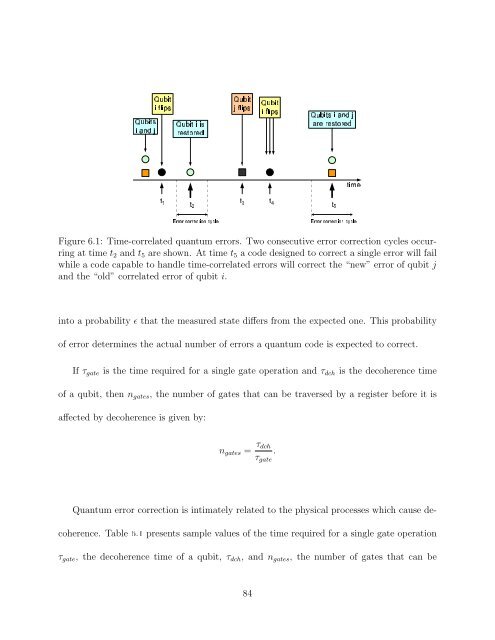t b a b a
t b a b a
t b a b a
You also want an ePaper? Increase the reach of your titles
YUMPU automatically turns print PDFs into web optimized ePapers that Google loves.
j Qubit flips i and j Qubit i is restored Qubit Qubits i and j are restored Qubit flipsi<br />
i flips Qubits<br />
t3 t1 t4 t5 t2 time<br />
Figure 6.1: Time-correlated quantum errors. Two consecutive error correction cycles occurring<br />
at time t2 and t5 are shown. At time t5 a code designed to correct a single error will fail<br />
while a code capable to handle time-correlated errors will correct the “new” error of qubit j<br />
and the “old” correlated error of qubit i.<br />
cycle correction Error cycle correction Error<br />
into a probability ɛ that the measured state differs from the expected one. This probability<br />
of error determines the actual number of errors a quantum code is expected to correct.<br />
If τgate is the time required for a single gate operation and τdch is the decoherence time<br />
of a qubit, then ngates, the number of gates that can be traversed by a register before it is<br />
affected by decoherence is given by:<br />
ngates = τdch<br />
Quantum error correction is intimately related to the physical processes which cause de-<br />
coherence. Table 6.1 presents sample values of the time required for a single gate operation<br />
τgate, the decoherence time of a qubit, τdch, and ngates, the number of gates that can be<br />
84<br />
τgate<br />
.

















